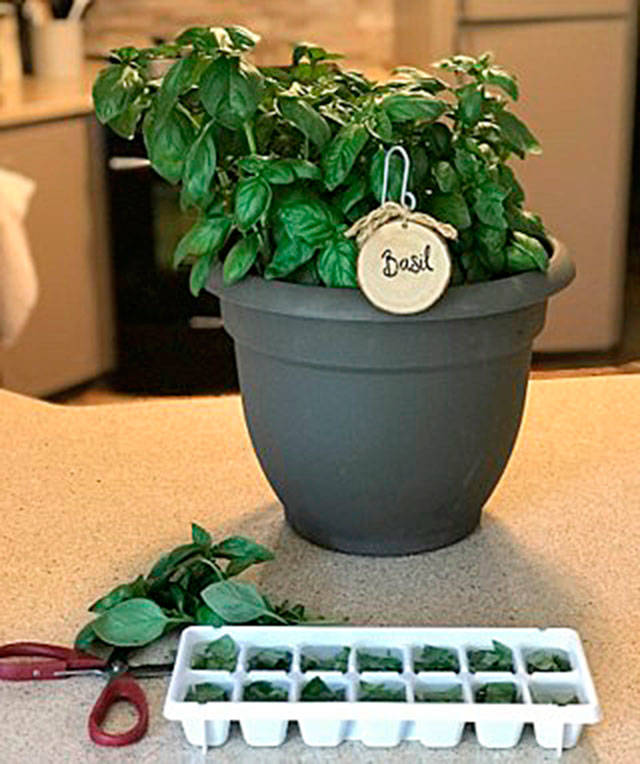Imagine it is late fall and you have a large quantity of vegetables still in your garden or maturing and winter is coming soon! What to do?
Many vegetables can be left in the ground for a while before the ground gets too cold and wet. Maturing carrots, parsnips, kale, chard, winter cabbage and Brussels sprouts would fall into this category. If fact, carrots, parsnips and Brussels sprouts are often sweeter if harvested after a few frosts since the plants produce more sugar as an anti-freeze.
There are, however, many alternative ways to deal with other vegetables, fruit and herbs.
Drying
Herbs and many members of the onion family such as garlic, onions and shallots can be successfully stored using this method. Herbs can be air dried outside hung in bunches, in a dehydrator, oven or microwave. An alternative is to finely chop the herb, pack into an ice cube tray, add the minimum amount of water to each tray and freeze. Use these cubes to add flavor to soups and stews.
It is critical to ensure onions, shallots and garlic are fully dry before going into storage. This can take several weeks of drying in a dry location for onions and shallots. The skin must be dry and roots free of soil and dirt. Sometimes using an old toothbrush can help remove debris from the root end. Properly dried, good storage varieties can keep for six to 10 months.
Curing and hanging
This method is excellent for late-season summer and winter squashes. Bring in the squash when the skin has hardened so that a fingernail does not leave an impression on it when pushed into it. Squash will store for months in a cool place when the skin is properly cured.
Storing in moist sand
Storage in moist sand is an excellent method for storing root crops. Fill an old plastic basin with moist, not wet sand and place the vegetables in layers, covering each layer with more moist sand. Cover the filled basin with a burlap bag. Vegetables stored in this way include: carrots, parsnips, beets, turnips and rutabagas. In all cases remove the top leaves. Store the basin in a cool, dry location.
Storage in a dark, cool location
An ideal method for storing potatoes and late season apples: Late apples can be stored in wooden crates placing a layer of wax paper between each layer of apples. Use only unblemished apples; use the rejects for apple sauce. Potatoes need to be dried off before storage for at least one to two weeks to cure the skin. When dried, store in burlap bags in a cool, dry, dark location. Do not store them on a cold concrete floor ; keep them off the ground.
Canning and preserving
Late crops of beans and late harvest tomatoes and cucumbers can be preserved by canning which is a topic for another article. If interested, refer to a canning manual for instructions.
Bob Cain is a Clallam County Master Gardener.


